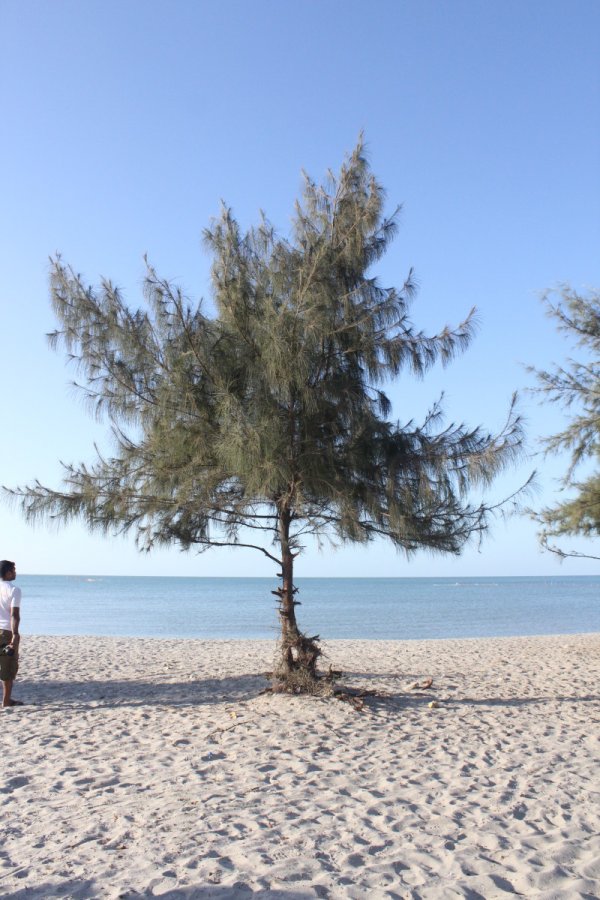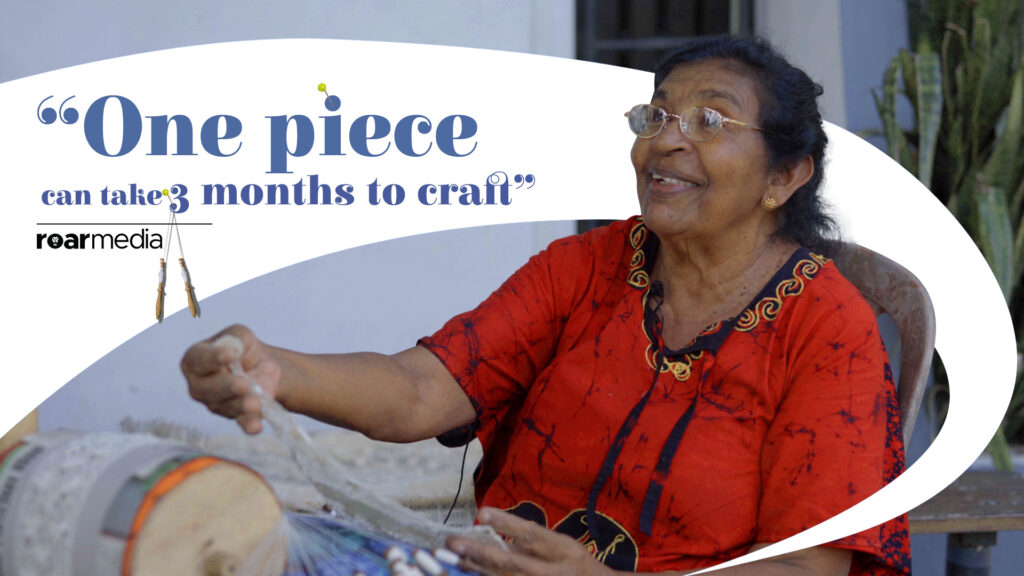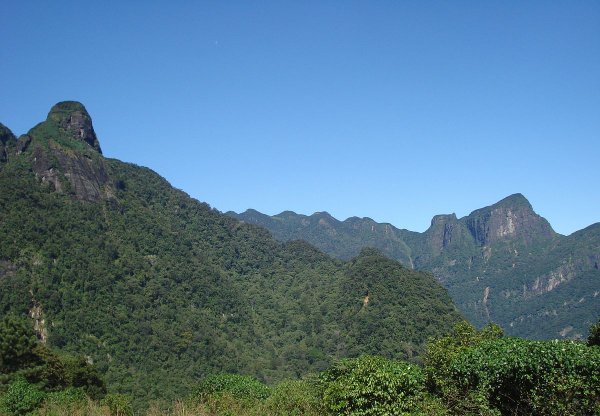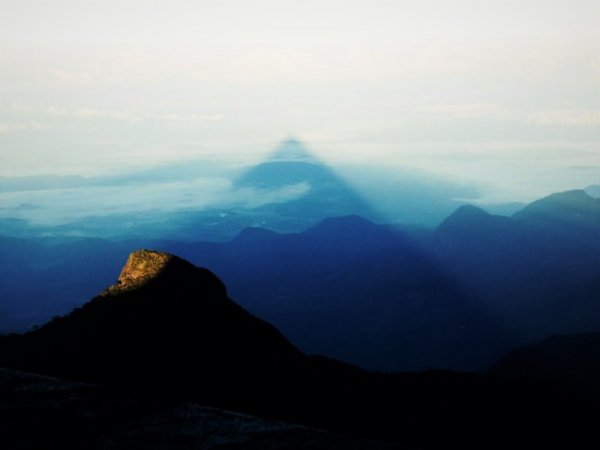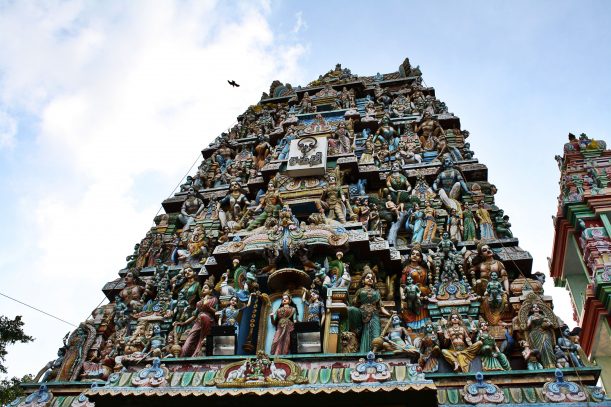
We were almost gliding on the new roads in Northern Sri Lanka. That is when the Nandikadal lagoon started running parallel to us at a distance. Shiva, the driver of the trishaw, indicated the spot where LTTE’s leader Prabhakaran was found dead. Despite my requests, he did not stop his trishaw. He was scared that the army would question him if they noticed. Then he said something completely unexpected.
“Prabhakaran is not dead. Some people say he will come back. Someday.”
He looked at the road and avoided eye contact.
Those were my first thirty minutes in Mullaitivu, a place most travel guidebooks aren’t interested in.
But still, Mullaitivu wears its reputation with some hesitation. It is known to have been the last theatre of the Sri Lankan war. And this was the reason I decided to visit the town on the north-eastern coast.
 A naval assault of the LTTE, at display in the war museum in Puthukkudiyiruppu.
A naval assault of the LTTE, at display in the war museum in Puthukkudiyiruppu.
Luck had been on my side. A friend introduced me to Shiva (name changed), a gregarious young Tamil man. He was from the north but had lived in Anuradhapura for a long time and spoke both Tamil and Sinhala with equal élan. If that wasn’t enough, his working knowledge of English was pretty good too.
I had arrived from Jaffna on a three-hour bus ride after being assaulted by non-stop Tamil songs.
In what was a pleasant surprise, Shiva was waiting for me with a trishaw at the bus station. He was planning to drive me around on his own. The idea of a friend ferrying you around in a trishaw seemed exciting for some odd reason.
We then raced to the war museum in Puthukkudiyiruppu. The differences in Sri Lanka are not just limited to ethnicity, culture, and language. Even the landscape plays a role. The south is lush and green, while the north is dry.
The war museum is where I was introduced to an interesting tourism trend taking place in the country. What I believed would be of interest only to extra-curious travelers like me, was a tourist destination in its own right. Hordes of people from the south had made their way to receive guided tours by soldiers of the Sri Lanka Army.
 The skeleton of the submarine which the LTTE was attempting to build.
The skeleton of the submarine which the LTTE was attempting to build.
The war museum had pictures of the Vanni humanitarian operation. The Sri Lanka Army had created ‘safe zones’ for civilians caught in the crossfire between the army and the LTTE. There are accusations against both sides that they did not use discretion to protect civilians. Fortunately for the LTTE, they are no longer around to answer these uneasy questions.
“Do you think the Sri Lankan army killed civilians on purpose?” I asked Shiva.
For someone who yearns for a better place for Tamils in the country, he was quite dismissive of any planned atrocities by the army.
“No, they were just doing their job of finishing the war,” responded Shiva.
The open air museum displayed naval assault vehicles, guns, and other weapons captured from the LTTE by the Army. Despite the hate, the visitors could not hide their awe of the ingenuity of the LTTE. In a strange way, the museum seemed more of a tribute to the LTTE, than a reminder of their horrific crimes, which would have been the intention.
 Victory monument dedicated to the Sri Lanka Army at Puthukkudiyiruppu.
Victory monument dedicated to the Sri Lanka Army at Puthukkudiyiruppu.
Next to the war museum was the victory monument, a glowing memorial to the Sri Lankan army that fought and won this war. However, only celebrating the victory and not acknowledging the deaths of many civilians had drawn much international, and some local, criticism. The Government has now accepted that all missing people from the war were dead. This may pave the way for a memorial for local civilians who lost their lives.
As I stood sipping some Cream Soda, a lady tourist from Hikkaduwa realised I was from India. She enquired, “Why are you with these Tamil boys?”
I explained to her that they were friends and wonderful people. Although she did not seem convinced, she went on to give the region a back-handed compliment. “But even these terrorist areas have nice things to see,” she concluded and walked away.
Clearly, the LTTE’s legacy will not disappear in a hurry.
 The swimming pool that was used to train Sea Tigers, the naval arm of the LTTE.
The swimming pool that was used to train Sea Tigers, the naval arm of the LTTE.
In the jungles close to Mullaitivu, lies another site on this odd tourist trail. It is the Olympic-size swimming pool, where Sea Tigers (the naval arm of the LTTE) were trained. At 83 feet in length and a depth of 22 feet, it could well be one of few swimming pools of its size on the island.
A short trishaw ride from the pool is the remnant of another one of the LTTE’s naval attempt. The rebel group was experimenting with a submarine which could have considerably strengthened their ability to attack the Sri Lankan armed forces.
When we reached, there was only a lone soldier listening to songs on the radio to keep himself entertained. With no possibility of the LTTE coming back, he could take it easy.
Before lunch time we reached the spot where a Jordanian ship was hijacked by the LTTE. Farah III was on its way from India to South Africa carrying rice and other goods. Unfortunately, it encountered some engine issues and had to drop anchor in Tiger land. With a ruthlessness typical of the Tigers, they had stripped down the ship, confiscated all the goods, and made it their operational centre. The body of the ship stayed on the spot before the government authorities decided to take it away a couple of years ago.
 Remnants of the Farah III, a Jordanian ship which was captured by the LTTE.
Remnants of the Farah III, a Jordanian ship which was captured by the LTTE.
In many ways the idyllic site of the Farah III is a metaphor for the contrast that is Sri Lanka. A land so beautiful, that its charm had to be compensated by the violence of war.
Despite the wounds of war still showing on the walls of houses and shops around Mullaitivu, the Government and aid agencies seem to have done a good of building infrastructure. The roads glisten and Mullaitivu town seems to be getting on with life.
 Free refreshments were distributed at some spots in and around Mullaitivu, on account of Pongal.
Free refreshments were distributed at some spots in and around Mullaitivu, on account of Pongal.
The day I arrived in Mullaitivu was also the Vattappalai Kannaki Amman Pongal, the annual festival at the kovil in Vattappalai. This otherwise distant destination comes to life on that day every year. Throngs of devotees, both Hindus and Buddhists, had made a beeline for a sight of the goddess. She is known to be magnanimous in granting wishes.
I asked Shiva again, “Do you really think Prabhakaran will come back?”
This time, he chose to be pragmatic.
“I know he is dead machang. We need to forget the war and find a peaceful solution to live together in Sri Lanka.”
 A kawariya, or devotee of the goddess, outside the Kannaki Amman Kovil.
A kawariya, or devotee of the goddess, outside the Kannaki Amman Kovil.
As we got ready to say goodbye under the fading crimson sun, Shiva added something:
“The LTTE used to shower flowers on the Amman temple earlier, now the Sri Lanka Air Force does it.”.
And that was the great possibility of Mullaitivu.
Rather than being known as the last battlefield of the Sri Lankan war, someday it could be seen as the place where the new, united Sri Lanka was born. It might take some effort, but it should all be worth it, machangs.
All images courtesy Sachin Bhandary.
The writer is an ex-PR professional from Mumbai, India, who quit his job to travel the world and take on challenges. You can follow his eccentric travel experiences on Instagram, Facebook, Twitter, and on his website www.eccentrips.com.

